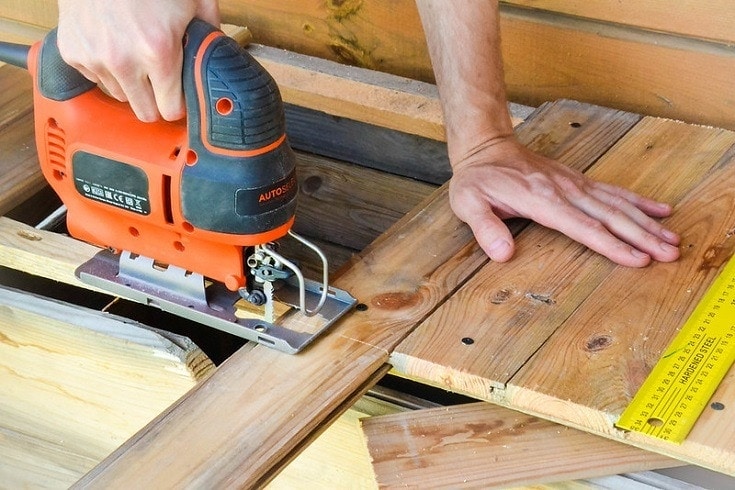Bandsaw vs Jigsaw: Pros, Cons, Types, & FAQ
-
Pete Ortiz
- Last updated:
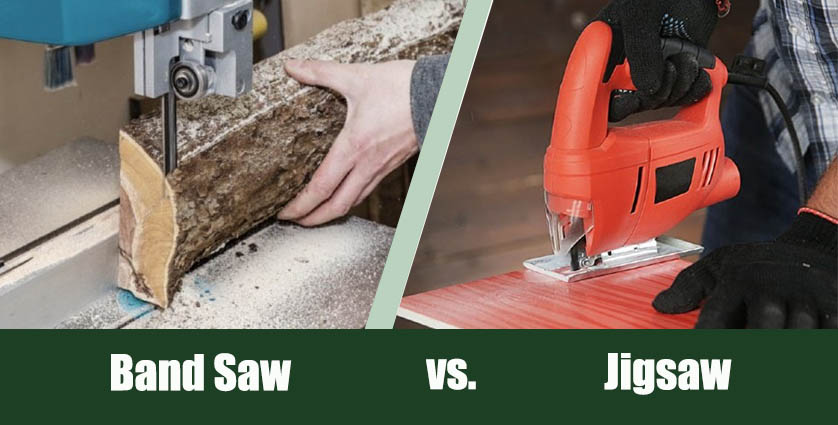
Many workshop power tools can handle various projects, but experience teaches you to appreciate nuances and best uses for each machine. It’s how you get incredible results with minimal fuss.
That’s especially true when comparing bandsaws and jigsaws, two tools that can complete many of the same tasks but with different approaches. As a result, a bandsaw is better for some projects, while a jigsaw is preferable for others. If you’re wondering which tool will give you the best experience with your next project, we’ll detail the differences between a bandsaw and a jigsaw and explain when to choose one over the other.
 Bandsaw Overview
Bandsaw Overview
A bandsaw is a large, stationary piece of machinery that uses a long, looping blade to cut wood, plastic, and metal. Like a table saw, a bandsaw has a flat surface to lay the material being cut as you guide it through the blade.
Bandsaws have been around for centuries, with the first iterations using steam. Today, bandsaws are one of the most powerful pieces of shop equipment, using 1–1.5 HP motors or larger to cut through all kinds of materials at various thicknesses.
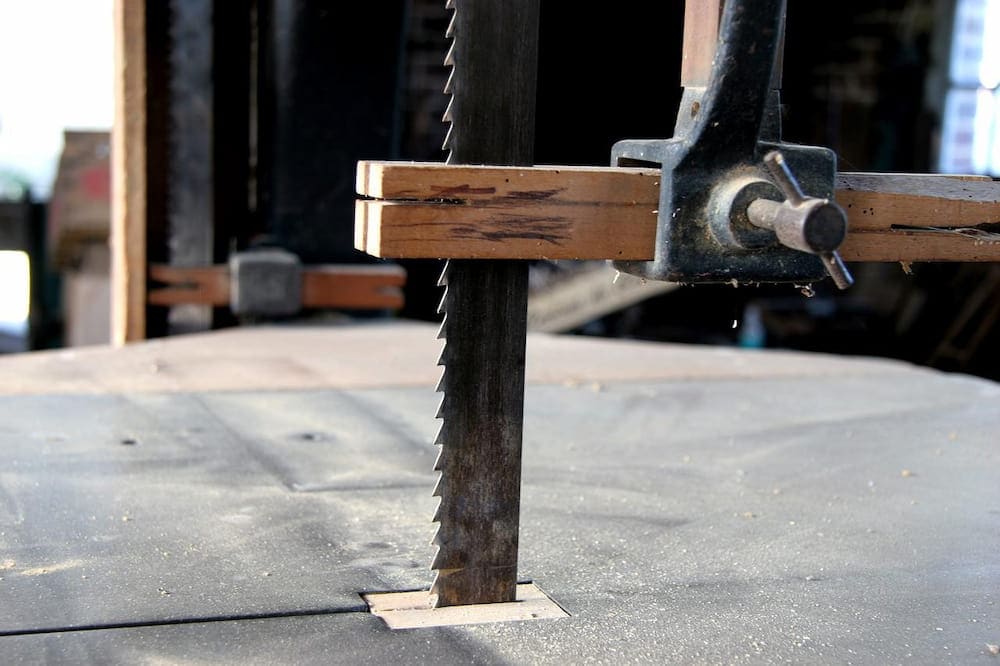
How a Bandsaw Works
A bandsaw uses a long, thin blade with welded endpoints, creating a circular band. The band fits around two large wheels, one sitting over the other, creating an upright continuous loop. Each wheel is generally over a foot in diameter. You must adjust the tension when placing the blade around the wheels and through the table surface to create a tight hold and a controlled cut. The blade is held steady near the table with a guide on the back while the tooth side is free.
The bandsaw’s blade moves in one direction—down. The constant downward motion draws sawdust down and away from the material, providing better visibility and control while reducing the vibration and jitter that comes with a reciprocating action. The long blade reduces wear and overheating on the individual teeth, allowing for extended use without performance loss.
When to Use a Bandsaw
A bandsaw is powerful and easy to adjust. You can use it on numerous materials and projects, so you’ll find them in many places, including woodshops, auto shops, and fabrication shops.
Bandsaws have wide throats (distance from the blade to the machine column), often over 16 inches, so they can handle relatively wide cutting pieces. You can also adjust the cutting depth (length of the available saw blade) to 12 inches on most freestanding saws, making it the best option for extra-thick materials.
Because bandsaws combine thin blades and minimal kerf with heavy-duty cutting power, they are the default tools for many ripping and resawing jobs. Resawing involves cutting boards with the grain to split them, often into thin sheets for veneers. Bandsaws usually include a fence for this purpose.
Power and control are constants with a bandsaw, but what makes it so versatile is the enormous array of blades it can use. Some blades are thick and rigid for straight cuts, while others are thin and flexible for tight turning and shaping. Some have deep, hooked teeth to rip through thick lumber, and others have tightly packed teeth to churn through metal tubing. There are countless combinations of blade features available to make cutting tasks as efficient as possible.
- High-powered and versatile for numerous applications
- Downward cutting action facilitates controlled cutting
- Several blade varieties allow for both straight and detail cuts
- Not as ideal for fine detail work as a scroll saw
- Requires regular maintenance
- More difficult to set up and adjust than other power saws
- Much more expensive than other power saws
Jigsaw Overview
A jigsaw, also called a “saber” or “bayonet” saw, is a handheld power tool available in corded and cordless options. They have smaller motors than bandsaws and have much less power. The blades are narrow strips about 5 inches long, though some specialty blades can measure up to 10 inches long for thicker material.
How a Jigsaw Works
A jigsaw is a portable tool that you can control with one hand at any angle. The jigsaw has a platform that lays flat on the material for control. The replaceable blade moves up and down through a gap in the platform, while a small guide in the teeth helps you follow your cut line.
When to Use a Jigsaw
Jigsaws are unencumbered by massive machinery, making them lightweight and portable. Blades are fast and easy to change, so you can quickly move to different cutting projects with one tool. They’re perfect for on-site cutting, and they can cut broader pieces than a bandsaw could never handle. For instance, if you’re cross-cutting a 12-foot board in the middle, there’s no way a bandsaw could do it at a 90-degree angle.
A jigsaw is also preferable when you need to make tight, complex curved cuts in a piece of wood. Although a bandsaw generally provides better control, a jigsaw can use a thinner blade with a tighter turning radius. Plus, jigsaws have the unique ability to change the angle of the blade, as you would need for mitered cuts.
You can also use jigsaws for plunge cuts, a job that’s impossible for a band blade. Jigsaw blades can angle for this purpose, but you can also drill a hole and start cutting through it if you need to start from the center of a board. For instance, you would use a jigsaw if you need to cut a notch in a floorboard to fit around a vent.
Because they have much less power than a bandsaw, jigsaws are not ideal for cutting thick materials. If you have a softwood like pine, they can handle thicknesses of roughly 1.5 inches. They generally can only cut harder materials, like hardwoods and metals, if they are less than an inch thick. As with a bandsaw, you can choose different blades for speed, accuracy, and smoothness.
- Portable and usable at any angle
- Easy to operate and change blades
- Machine and blades are less expensive than bandsaw alternative
- Useful for cutting from the middle of a board
- Can handle tight, complex turns
- Cannot handle thick materials like a bandsaw
- Blades wear faster than bandsaw blades
- Not as much control as a bandsaw
- Reciprocating action kicks up sawdust and can limit visibility
Types of Bandsaws
Free-standing and benchtop vertical models are what most people envision when they think of bandsaws, but there are several styles to optimize cutting in various contexts.
- Portable bandsaw: A lightweight handheld saw to use on the move
- Horizontal bandsaw: A bandsaw that lowers down for horizontal cuts through clamped material
There are also specialty vertical and horizontal bandsaws for different industries. You can find saws specific to wood, metal, and even meat cuts.
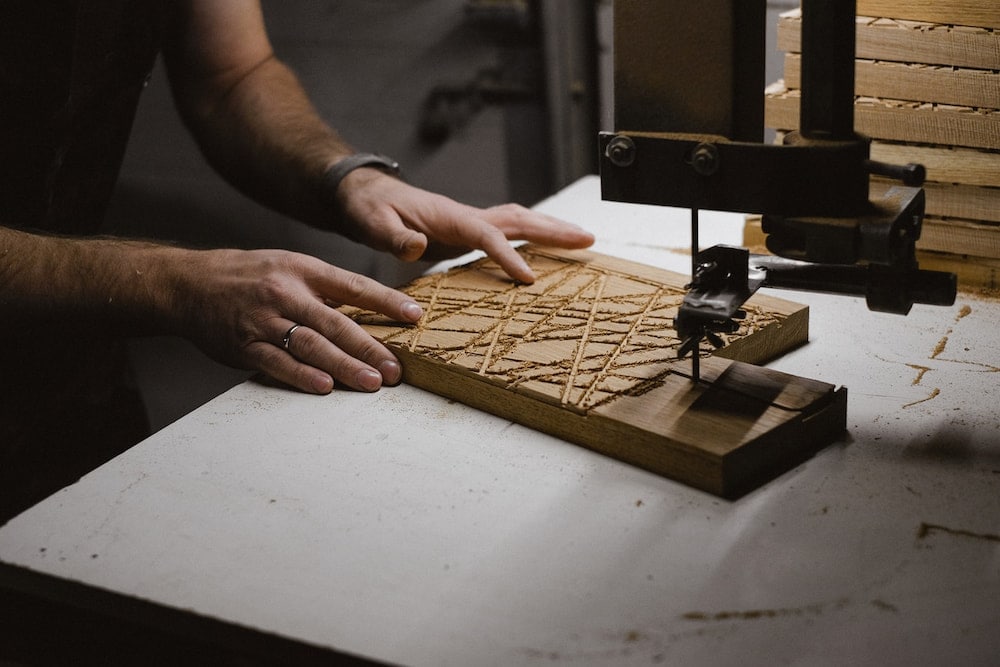
What Are the Differences Between the Blades?
Bandsaws and jigsaws can handle a variety of materials, including wood, metal, plastic, and tile, but their performance often depends more on the blade than the machine. Depending on the material and type of cut you’re making, you’ll have to find the right combination of tooth type, pitch, width, and metal for the best results.
Tooth Type
Teeth vary in shape and spacing. There are three basic types of blades—regular, skip tooth, and hook tooth. Regular and skip tooth blades are general-use options where the teeth stick out perpendicular to the blade. They cut relatively slowly but provide a smooth, clean finish, and a skip tooth is ideal to prevent clogging on soft materials. Hook tooth blades shred through materials quickly and roughly, perfect for ripping wood framing and other coarse-cut materials.
Teeth Per Inch (Pitch)
Teeth spacing is measured in teeth per inch (TPI), or how many teeth take up one inch of the blade. Teeth that are spread out (low TPI) are better for thicker and softer materials, like when you’re ripping wood. Tightly packed teeth (high TPI) are better for thinner materials, particularly metals.
The general rule is you always want a few teeth making contact with the material, so thickness and TPI go hand-in-hand. Use a TPI that’s too low, and the teeth could straddle the material, causing the blade to shutter and teeth to break. Meanwhile, a TPI that’s too high can lead to excess wear and scorching.
You also need to consider the tooth “set” or the way the teeth alternate down the blade. Different sets contribute to wider and thinner kerfs and better performance for other materials.

Blade Width
Blade width is the distance from the tip of the tooth to the back of the blade. Thicker blades work best for straight cuts, as they’re generally more rigid and act as a guide to keep the cut even. Thinner blades work best for turns. It’s crucial to identify the blade width that will allow you to follow the turning radius you need.
Blade Material
Jigsaw and bandsaw blades contain similar materials, with some being more appropriate for cost-effectiveness and others for performance.
Carbon steel blades are standard blades that provide the best flexibility. They’re usually the least expensive, but they also tend to wear out the fastest. Bi-metal blades are upgrades that use high-speed steel teeth and carbon steel bodies, giving them a solid blend of flexibility and durability. The best blades are usually carbide or tungsten carbide blades, which offer the best heat resistance, cutting power through dense material, and lifespan.
There’s a lot to unpack when it comes to blade types. The point is that these saws are incredibly versatile, but you must pay attention to the blade. Using the same one without regard for the specific application will fatigue your equipment and make you waste time with inefficient tools.
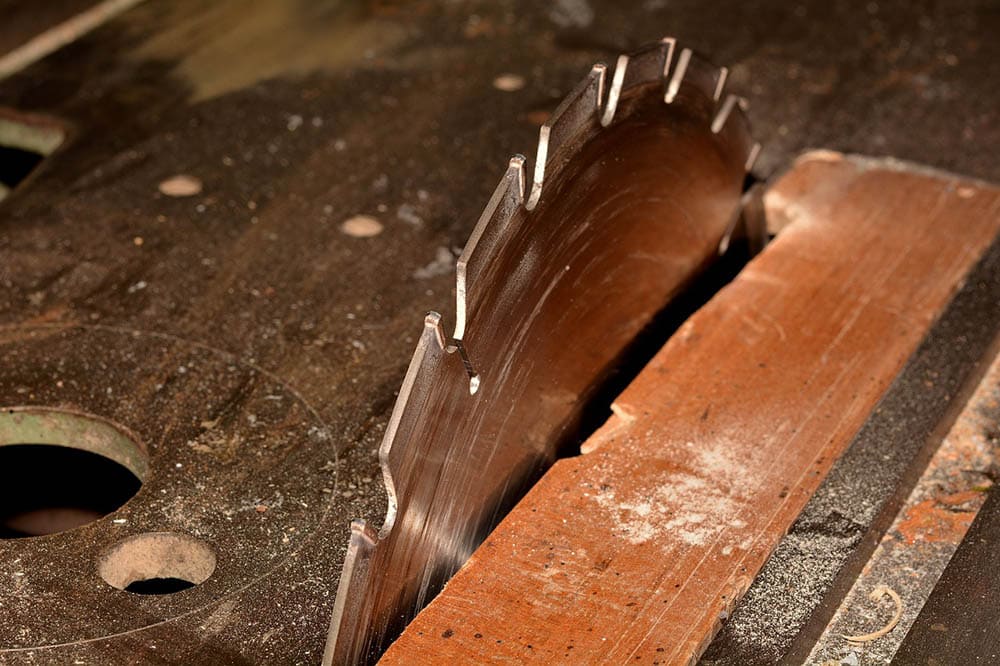
Is a Bandsaw Better Than a Jigsaw?
In the shop, the bandsaw can do much more than a jigsaw, particularly when it comes to capacity cutting. With a bandsaw, you can rip a stack of lumber up to 12 inches thick in seconds. Change the blade, and you can use it for cutting out ornate, curving shapes. You can even make a simple homemade rig to let your bandsaw cut perfect circles in materials.
As a lower-powered and more unwieldy alternative, the jigsaw is best for the work that a bandsaw can’t do. Portability lets you bring the saw to your work and hold it in any direction, allowing you to complete all kinds of tasks, from cutting boards horizontally to removing sections of drywall. You can start cuts from the middle of materials after drilling a starter hole, and you can do tighter turns and follow stencils for the finest detail in complicated patterns.
 Conclusion
Conclusion
Jigsaws and bandsaws have many similarities, but they excel in unique areas. Bandsaws are high-powered equipment that can handle countless cutting jobs, including resawing, ripping, cross-cutting, and shaping. Meanwhile, your jigsaw can go where the bandsaw can’t, thanks to its portability and linear blade. Appreciating the nuances between the two is crucial for reducing frustration and wasted time and effort. As you build your workshop, a quality bandsaw and jigsaw should earn a place in your arsenal.
Featured Image Credit: (L) Super8, Shutterstock | (R) Aleksey Dushutin, Shutterstock
Contents

 Bandsaw Overview
Bandsaw Overview
